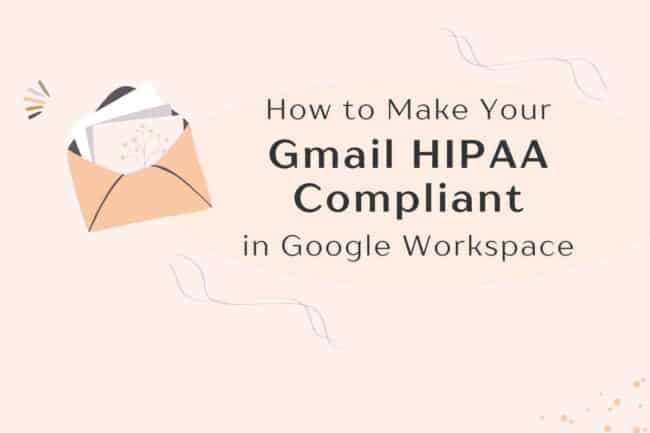It’s not enough to get people to visit your website. It’s not even enough to have a great looking website. You need to have an effective website.
If you are a therapist, you want people to reach out for a free consult or schedule their first appointment.
If you have goods or services for sale, you want those people visiting your site to make a purchase.
Or, if your visitor isn’t ready to make a decision yet, your website needs to provide ample ways for them to follow you and keep in touch.
It’s not always easy to know which website conversions work best for your site.
And most business owners don’t understand how to calculate the conversion rate to see how well your site is performing.
That’s where we can help. Keep reading to learn how you can optimize your website to get the most conversions.
What Are Website Conversions
What are conversions on websites for therapists? It’s when someone visits your site completes the goal you intended that person to make.
However, there are different types of goals you may have on your website. The most common and biggest one is to get a visitor to make a purchase. That’s considered a macro-conversion.
Other macro-conversions are subscribing to a service and requesting a quote.
But there are smaller conversions, known as micro-conversions that you may also want the user to complete when they visit your site as well.
Some examples of a micro-conversion are creating an account, adding a product to the cart, and signing up for your e-mail list.
. . .
How to Calculate Conversion Rate
If your only goal is to sell a product or service, you may be able to determine how well your conversions are doing without needing to understand your site’s conversion rate just based on how much money you’re earning.
However, knowing how to define conversion, which is the number of times a user completes a goal and dividing it by your site’s traffic, is helpful to know exactly what is and what isn’t working.
Knowing this information can help you make necessary changes immediately which can save you time and money. If you find that a user can convert during each visit by purchasing a product, you can divide the number of conversions by the number of unique times that user came to your site.
If you’re selling subscriptions, you can calculate the conversion rate by dividing the number of conversions by the total number of users.
How to Optimize Conversion Rates on Your Website
Conversion rate optimization only occurs after the user lands on your site. It differs from conversion optimization for SEO and paid ads. These focus on who clicks through to your site from organic searches, how many clicks you’re getting, and which keywords are helping drive traffic to your site.
Let’s take a look at some of the easiest ways to use conversion rate optimization even if you’re new to all this.
. . .
Put contact forms on every page of your SMB or therapist website
When someone fills out a contact form on private practice therapist websites, they are giving you access to their most valuable communication method: their inbox. From an outreach and therapist marketing perspective, this is a goldmine … so make sure to give your visitors plenty of ways to get in touch.
Research shows that nearly 50% of contact form submissions come from a page other than the contact page.¹ That means if the only form on your therapy site is hiding on the contact page, you’re only getting half the leads you could be getting.
Therapist contact forms in all shapes and sizes. Many therapy sites include in-depth contact forms. This is great for a contact page or a “book an appointment” page. However, if this is the only way to reach out, it can alienate potential patients who are not as far along in the decision-making process. Many people just want to learn more about the process and aren’t ready to commit to anything. Therapist website contact formSo what does that mean for you? Try using different styles of contact forms.
Your goal is to declutter your site as much as possible. And that includes your form fields. Only ask them for the information you absolutely need from your customers and eliminate the rest. Most companies can get away with only using four fields.
. . .
Use Real Photography on Your Site
It’s tempting to use stock photography. The photos look great. But it’s also easy to tell they’re stock photos. And people buy from people.
Your customers want to make a purchase from you and your employees.
Don’t be afraid to use real photos of yourself and your employees on your website. It will actually help with sales.
Create a Marketing Funnel
Not everyone is ready or willing to make a sale the first time they land on your website. But that doesn’t mean they won’t make a purchase in the future.
Some people need to go through a marketing or sales funnel to learn more before they’re ready to make a purchase. If you create one by offering valuable advice on your blog, whitepapers, and with free reports, you educate your visitor on the value of your products and services.
Now you’ve become their trusted advisor rather than just another website.
The more effort you put into building a relationship with prospective customers, the more likely they’ll want to buy something from you.
Give them good reasons to sign up for your email list in exchange for their information. Then continue to provide them with content via email. After that, you can send them your sales copy and ask them to make a purchase.
. . .
Create a Sense of Urgency
When you create a sense of urgency, it prompts people to buy from you rather than waiting and making a decision later. This is good because the longer they wait, the less likely they’ll make the purchase.
Make a time-sensitive offer that they can’t resist.
Offer a discount if they make the purchase within 24-hours. Give customers who make a purchase right away a better delivery time than those who wait.
You can also let them know that your merchandise is going quickly. Just display that you only have a specific number of certain items left and you’ll see them all purchased quickly.
. . .
Address Objections and Offer Solutions
It’s easy to address the concerns a buyer may have in person. Online it’s far more difficult, but it’s not impossible.
Make a list of all objections and hesitations your potential customers may have. Then add that information into your sales copy to help them feel more confident about making a purchase.
Let them know how your product solves their problem. Show them why your company is trustworthy. Have other customers leave testimonials to explain their experiences with your products and services.
And explain why your product or service is the best bang for their buck.
. . .
Make it Easy to Reach You
It’s frustrating for a customer when they try to reach out to a company only to find no way to reach you. Make it easy for them by displaying your phone number or email address prominently on your website.
Do not make them hunt for it. And if you do prefer they email you, offer them reassurances that you’ll get back to them promptly.
No one buys from a company they feel is avoiding or ignoring them.
But if you provide topnotch customer service by making it easy for them to reach you for questions or concerns, you gain their trust and their respect.
. . .
Get Help With Conversion Rate Optimization Services
Website conversions are crucial to the success of every business that sells a product or service online. But it’s not easy to do it on your own.
Having a professional marketing company provide you with conversion rate optimization services means you get to focus on your business while you watch your ROI get higher.
We can help. Click here to contact us.















